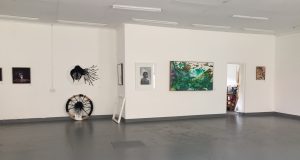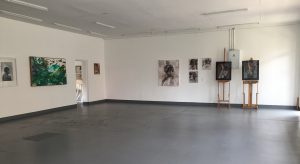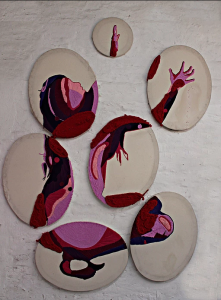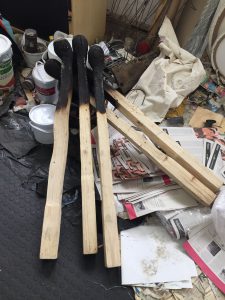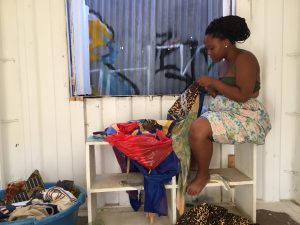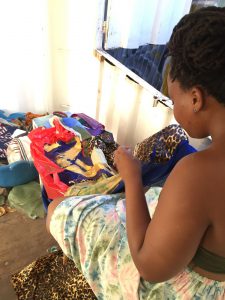Rise of the African Female Artist: Exploring Spaces and Dialogue
Highlighting African women's voices and visuals, EAS contributor from Tanzania, Valerie Amani, shows the emerging of a new avant-garde of powerful works that challenge the status quo and the ways women have been traditionally portrayed.
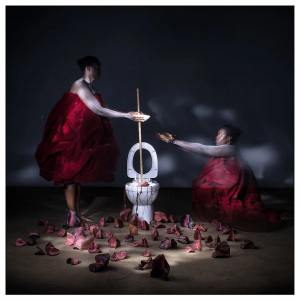
For the better half of the 20th century, among the many human rights' movements dedicated to equality and inclusion, universal rights for women has been at the forefront.
Walking through an alleyway full of “African Art” in Dar es Salaam, Tanzania, most of the images you find are either of wildlife, or a woman carrying a child, or a woman carrying a pot, or a woman gazing into the savannah. All images brought to life by the brushstrokes of a man. No wonder why these common pieces depicting women never actually engage with important aspects of the current and diverse African female narrative.
Balance for better. This was the theme for this year's International Women's Day - as an effort to promote a more gender-balanced world in all professional fields, including art. The visual art scenes in South and East Africa have been male dominated; women usually being pushed towards crafts such as beading and weaving - but a growing wave of contemporary, fearless female African artists has opened the way for narratives about women to be reclaimed by women. In light of the necessity for room to create female fueled artworks. There have been various platforms that have emerged with the sole purpose of encouraging and uplifting this essential movement.
The Project Space - Nurturing Female Art & Dialogue
The Project Space exhibition space in Johannesburg, South Africa
One of the spaces that specifically nurture female art, and the dialogues that come from them, is The Project Space (South Africa), located in the heart of the bustling and hustling Jo’burg. The project was a response to a 2010 national research study finding that only 3% of women of colour (Black, Indian and Coloured) made a living from creating art in South Africa - a figure that probably diminishes throughout other African states. Over a coffee with Director, Aysha Waja, we discussed the conception of this space, which provides dynamic artist residencies to African female artists, along with why the future of African art needs more spaces like this.
After asking her a bit about how the space was started Aysha said: “Well, our founder is Benon Lutaaya who (was) an amazing artist, who felt like there needed to be more opportunities for African female artists. It just started off as a young female residency award which was given to one finalist whose work was shown at the Cape Town Art Fair. As we have been growing, we have also evolved the way we run our program. So now we have one winner and 3 semi-finalists and we show all of their work at the art fair. The program takes place over a period of about 6 months. We mentor them and we have sessions where we invite other people to join."
Work by Alka Dass at The Project Space Work in progress by Asemahle Ntlonti at The Project Space
On discussing how much guidance and curation goes into the program, Aysha explained that they try not to interfere too much with the artist's process, but rather help out with ideas if the artist seems to be unsure of things. “We look into what they are trying to do and see how we can help them best realize that. It is best if they can learn how to better analyze the work and push through the challenges” she says. Because the residency space is located in an area with plenty of art stimuli, such as galleries and other artists studios, they always have access to a dynamic group of people they can talk to."
Aisha goes on to comment about the process when they exhibit the artists' work at an art fair:
“The only thing I really curate is the booth at the Art Fair [Cape Town & Johannesburg] - which can be tricky because you have an idea of how the booth looks and you get there and it’s like, “Wooph, this is not what I imagined!” She ends by commenting on the benefits these opportunities have brought the artist who have gone through their program, such as Alka Dass (South Africa) and Stacey Gillian Abe (Uganda) - who have received international recognition and gallery representation as a result.
The Female Narrative
Other conversations around this topic were had with Zimbabwean multi-media artist Kresiah Mukwazhi, while she was on residency at Nafasi Art Space, Tanzania. Kresiah's work has been mostly centered around the female narrative, especially with the relationships women have with their bodies - touching on themes of sexuality and gender-based violence.
Kresiah Mukwazhi on Residence at Nafasi Art Space, Dar es Salaam, Tanzania
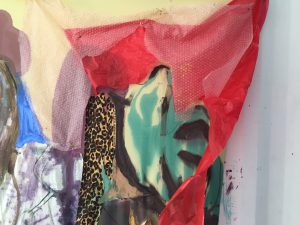
Kresiah acknowledges the fact that most female artists struggle to continue with their practice, especially after having children, with the greater part of the responsibility of raising the child falling upon them. She also disagrees with the notion of having special “women's exhibitions” stating: “Why should there be only one or two special events per year particularly for female artists? The titles for these exhibitions are mostly predictable. They almost always have something to do with emotions and ‘softness’. I would want to see broader subject matter. Why can't we integrate more female artists in group exhibitions?” She ends by saying what I think most female artists would agree with: “I just want to be included in an exhibition purely based on the strength of my work, not the fact that I am a woman”.
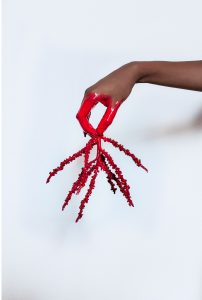
Shaming the Shamers
Elizabeth Emannuel is a mid-career, Tanzanian photographer who has recently tackled the issue of menstruation as a taboo through her art. Her work is both illuminating and daring, boldly shaming the shamers who have instilled feelings of embarrassment over something so natural. On asking Elizabeth about her experience as a female photographer in Tanzania she said:
“If you see Tanzanian photographers that are doing well, it's mainly wedding photographers and males. So as a female photographer, I constantly have to go the extra mile to look for opportunities that fall within my line of interest and passion. Even if a woman is doing a greater job than her male counterpart, female artists have to work extra for their voices to be heard in a patriarchal society.”
The Thread: Connecting Voices of Young African Female Artists
It is a fallacy to assume that the opinions of few are a true reflection of the views of many, every artist has their own unique journeys and challenges that lay before them. However, there is an apparent thread intricately tying together the voices of young African female artists - the desire to tell stories that are personal, familiar and, above all, real stories.
*In memory of Benon Lutaaya, founder of The Project Space, who passed away on Saturday 13 April 2019.
